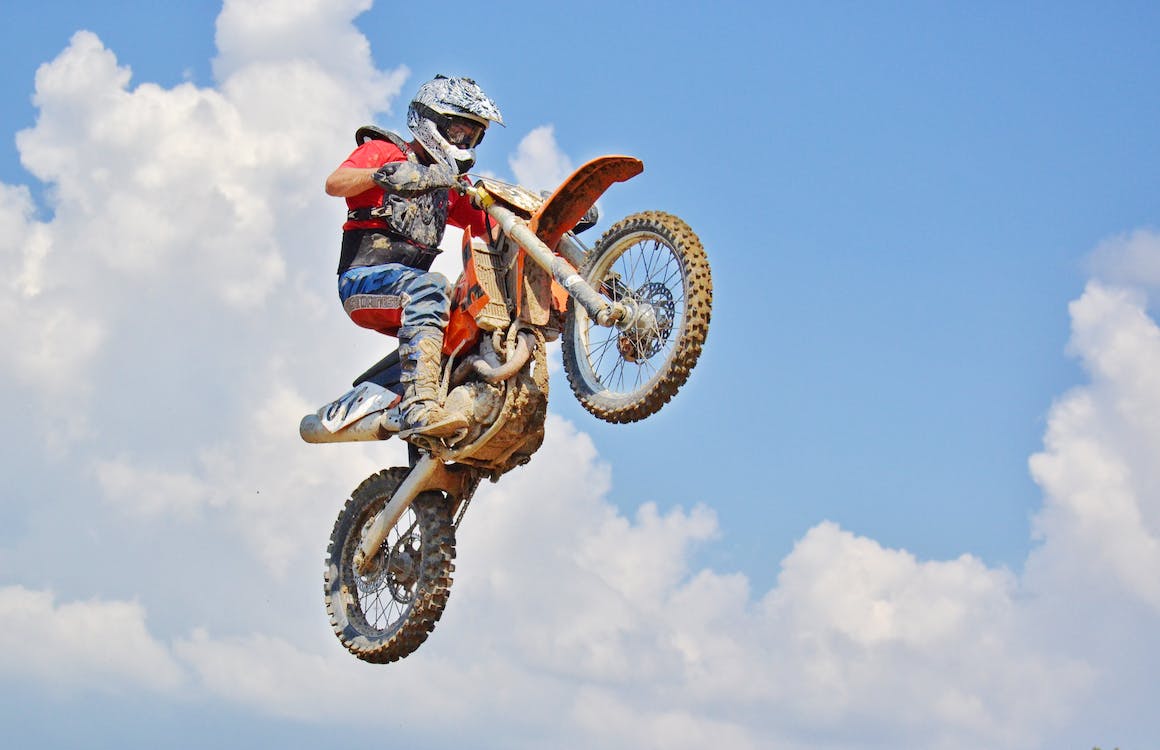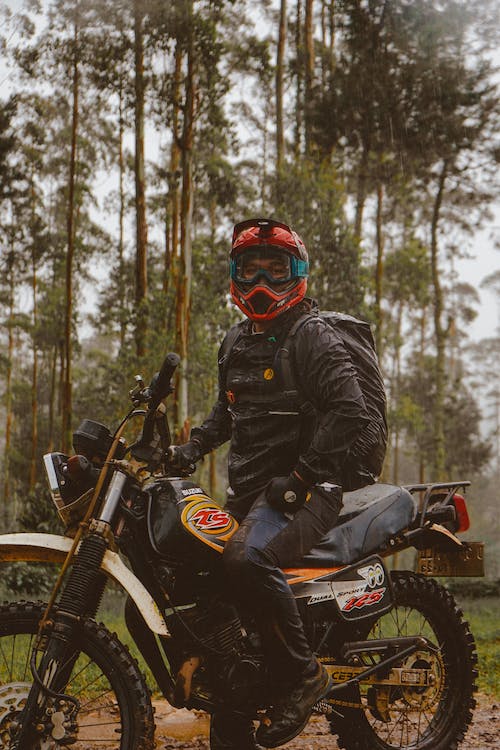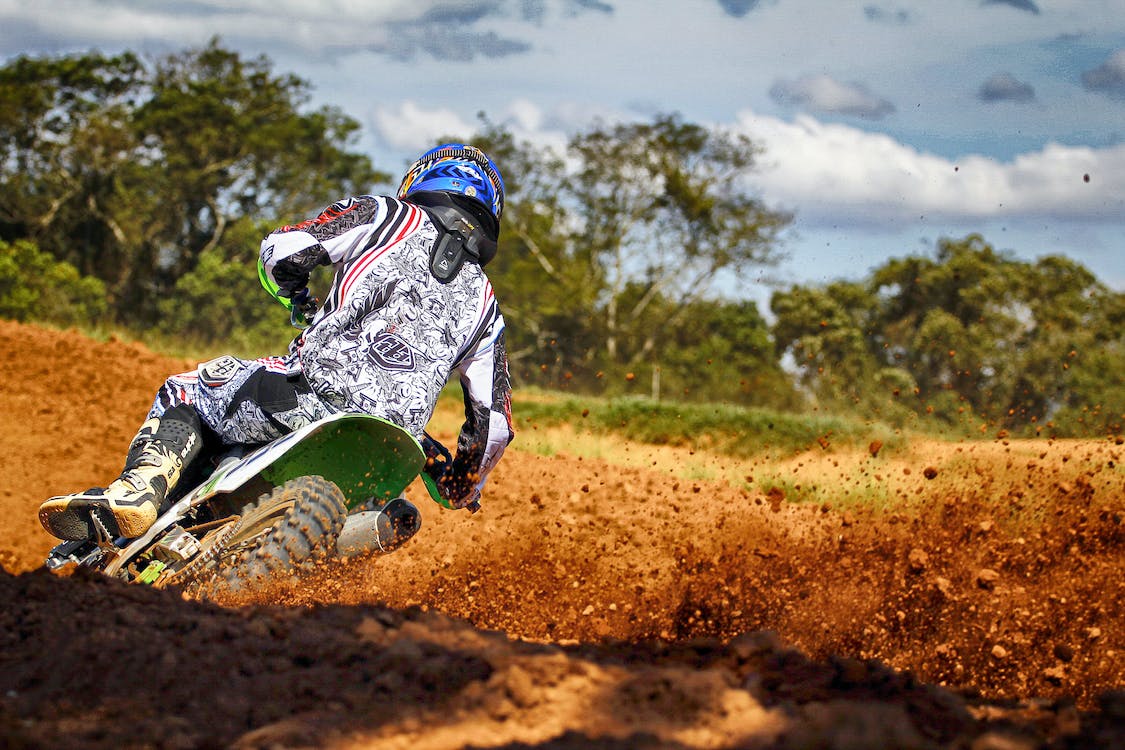Founder Of Dirt Bikes
In 1914, a young man named Siegfried Bettmann created the first dirt bike. He was the first to adopt already-available cycles. further made them for off-road use. Honda’s dirt motorcycles will be highly well-liked once they are produced and put on the market.
A brand-new game that offered a distinct viewing experience unheard of outside of Europe debuted in America in 1972. The dispute was comparable to what the globe required in the past. but rather a device for gaining an advantage. On a limited ground line of a natural environment with steep slopes, powerful turns, and additional jumps, dirt bikes, fast-moving and rough motorbikes, it was burnt out.
History Of Motocross Dirt Bikes
Edison Dye, sometimes referred to as the “Father of American Motocross,” established a motorcycle-riding business in Europe in the 1960s, and his journey across the lake introduced him to a new type of motorcycle racing. In reality, many Americans competed in races, enduro events, and other events involving dirt motorcycles in the United States, making dirt bikes more than simply machinery. At the time, numerous motorbikes were available for purchase, but they could only be used on paved roads.
First Bikes with Motors
The original motorbike was created in France in the 1860s and contained alcohol and smoke. It is operated with a little hand that could inject more or less smoke and a single-cylinder engine. It was a terrific ride because the motorcycle did not even have brakes. In Boston, a motorbike was also created in the late 1860s. In 1885, just a few Germans made a second dirt bike. Compared to others, it was far more sophisticated.
First Dirt Bikes
The first dirt bike was attempted in the early 1900s. To use more material and better use the road, Bettmann wanted to take what was already on the market and make a few modest tweaks. The final thing he did was make the bike ride downhill and make some small fixes, but it did not work out very well, which is one of the reasons it did not catch on.
Dirt Bike Riding for Beginners
Like other hobbies, riding a dirt bike requires some skill development if you want to have fun and be safe. Although the learning curve might first appear severe, after you have mastered the fundamentals, you will be in for an incredible ride.
Although it is preferable to learn how to ride a dirt bike with an instructor or buddy who has the expertise, you can still obtain a decent sense of the essentials by reading up on dirt bike information. We will go through the most important advice for learning to ride a dirt bike in this tutorial.
Gearing Up
A helmet is required when riding a dirt bike, just like it is for any other power sports vehicle. Off-road helmets are specially made for riding dirt motorcycles and other power sports vehicles on rugged terrain. All of these helmet designs have a chin guard to protect the face. Keep in mind to look for a U.S. DOT-approved helmet or one that has received SNELL approval for even greater safety.
Protection for the eyes is also crucial. Wind, dust, and branches are all eye dangers. Many off-road helmets lack the built-in eye protection that other types of helmets provide, so if yours does not, make sure to get a set of riding goggles.
The minimal minimum in protective equipment for riding a dirt bike is a helmet and eyewear. A dirt bike racer that is completely protected will also have full body armor, knee protection, and boots. Even while you may believe that you do not need as much protection if you are only riding trails rather than performing jumps on a dirt track, going outside with inadequate clothing still puts you in severe danger of harm. An “all the gear, all the time” mentality lowers your risk and aids in health preservation so you can keep riding and enjoying yourself.
Starting Your Dirt Bike
So, how do you turn these things on? Learn how your dirt bike’s clutch and shifters are arranged before using it. Adult-sized dirt motorcycles feature a foot shifter just in front of the left foot peg and a clutch on the left handlebar. The starter is on the right side, nestled close to the gas tank, and the throttle, which provides your bike gas, is on the right handle.
You can start most dirt bikes by following these steps
- Make sure there is petrol in your bike’s tank.
- To enable gasoline to flow, locate the little metal dial on the gas line and turn it to the on position. (Note: Some more advanced dirt bikes lack an actual gas switch in favor of a fuel injection system.)
- Remove the choke if required. This pull knob is often located on the left side of the bike, next to the rider’s leg rest.
- The kickstart lever on your bike’s right side should be flipped out. Before stepping down on the starter with your right foot to start the engine, place your left foot on the ground and check that the piston is positioned correctly. There are some bikes with electric starters. You only need to press the start button if you have one of these.
- If you are cold starting your bike, it can take a few attempts to get it going. Do not push the lever down too firmly. After starting the bike, insert the Kickstarter and choke again.
- Put the bike in neutral, engage the clutch on the left handlebar, then quickly step on the foot shifter to move into first. Keep the grip engaged to prevent stalling the bike.
- Release the clutch gently while accelerating the bike with the throttle to get it rolling.

Learning to Shift
It is time to move on to learn a little bit about dirt bike gear changing next. Shifting gears might be a bit difficult for novice riders, so look for a place that is spacious and free of obstructions where you can practice.
When you are ready to change gears, put your foot beneath the shifter and raise it by one click for neutral and two clicks for the next four ratios.
You will not want to linger there for very long once you have entered initially. Consider whether the engine appears to be having trouble and become familiar with the sounds it produces when you need to change gears. You can get assistance from a more seasoned rider in figuring out where your bike needs to change.
The procedure for shifting while moving is straightforward in theory—all you have to do is swiftly engage the clutch before hooking your foot beneath the shift lever and pulling it up to the next gear. Release the clutch, and presto! You are now in the higher gear. Coordinating your clutch and throttle to smoothly change up a gear while giving the bike a little juice is the tricky part of shifting. If you give it too much, your bike will elude you. If you give it too little, the engine will stall.
The fundamentals of gear changing on a dirt bike are the same as they are for gear shifting on any other vehicle. Higher gears are preferable for maintaining speed, while lower ratios are better for traveling at slower speeds and tackling hills. Dirt motorcycles can do this, unlike manual gearbox vehicles, although your bike should utilize the clutch.
Since neutral is situated halfway between the first and second gear on the shifter, beginners may need help to shift into it. It is crucial to spend some time getting used to finding it on the shifter.
Braking Techniques
You also need to understand how to use the brakes on your dirt bike. Most dirt motorcycles feature two brakes: one on the front wheel, operated by the lever in front of the right handlebar, and one on the back wheel, operated by the lever in front of your right foot peg. The rear wheel brake is an essential tool for efficiently managing your bike because the front wheel brake is often considerably more sensitive and can cause the rider to wipe out if used carelessly.
Remember that depending on the terrain, you will need to adjust your braking strategy. While smoother ground often necessitates more forceful braking, bumpier terrain frequently calls for more delicate braking. Keep in mind that braking is more difficult in muddy or sandy terrain. Try out different types of terrain when you are riding and pay attention to how your brakes handle each one.
Your First Rides
When learning to ride a dirt bike, go slowly. Rushing into rides you are not prepared for will not help you, so take your time and practice on flat ground as you learn the fundamentals.
Dirt Bike Sprocket & Gearing Guide
It takes considerable skill to change the drive components of a dirt bike. Do not anticipate a fast fix, such as changing the oil and oil filter. Determining when the dirt bike drive parts need to be replaced can also be challenging. But with time and practice, you will learn to recognize the warning indications. Therefore, a sight check should be your first step before every ride. The last thing you want to happen after opening up the throttle is for a chain to break.
It is time to replace your drive parts if you experience any of the aforementioned symptoms. It is usually ideal to replace the parts in sets because they all operate together as a unit. Measuring the space between the pins and keeping the chain together is the simplest technique to determine whether it is worn. This would show whether the chain’s “service limit” for stretch has been reached.
The service limit is described in the owner’s handbook for your bike. Replace the sprockets if your chain is worn, and vice versa. The wear patterns on the chains and sprockets are interconnected. Because of the wear patterns that have formed on the other parts, when one component is replaced but not the others, the new component depreciates more quickly. Chain rollers and guides often follow the same rule. These often wear down at the same rate, and if they break, the chain might hurt some extremely pricey components, like the swing arm.
When it’s time to update or purchase replacement dirt bike drive components, you will need to consider the sort of bike you have as well as your riding and racing preferences. Focus on gearing modifications and the sort of chain that is ideal for your bike and riding circumstances whether upgrading or searching for an edge. By upgrading to a higher performance part for some of the other parts, such as the chain slider and guide, you may go longer between replacements and your chain will last longer.
Sprocket Ratio
Depending on what you want to achieve with your bike, keep the following in mind while considering upgrading:
For Faster Acceleration (more bottom end)
- Use a smaller countershaft or a bigger rear sprocket for the front. The equivalent of altering one front tooth is changing three to four back teeth.
- lowers the gearing ratio. This is perfect for narrow trails or courses with few lengthy straightaways. In contrast to racing in the open desert, arena cross requires a lower gear ratio.
For Faster Top Speed (more top end)
- Alternate between a larger front and a smaller rear sprocket. Once more, adjusting the front of your gearing has a bigger effect than changing the back.
- greater gearing ratio is produced. Higher gearing ratios are effective in high-speed environments like desert riding, sandy motocross circuits, and other places without a lot of tight bends.
Maintaining Your Dirt Bike
Your dirt bike has to be properly maintained to perform smoothly and dependably. Performing the following routine maintenance procedures is essential:
- A filthy air filter can prevent air from reaching your engine, limiting performance, and even resulting in engine damage. Regularly clean or replace your air filter, especially if you have just been riding through muddy or dusty weather.
- Change your oil: Your engine needs regular oil changes to run smoothly and to avoid early wear. For information on how frequently to replace the oil in your specific dirt bike, go to the owner’s handbook.
- Check the tightness of your chain. A loose or tight chain can lead to subpar performance and quick wear on your drivetrain’s parts. To maintain the right tension, check your chain tension frequently and make adjustments as needed.
- Check your tires for cuts, punctures, and excessive wear. Off-road riding may be hard on your tires, so it is important to check them frequently. If necessary, change your tires for better traction and performance.
- Keep your brake, clutch, and throttle cables well-lubricated to guarantee smooth operation and avoid binding or sticking. Lubricate your cables and controls.
Dirt bike off-roading is a thrilling and fulfilling activity that provides countless options for exploration and adventure. You will be well on your way to becoming an experienced off-roader by picking the perfect dirt bike, practicing key off-road riding techniques, and keeping your bike in good working order. So, get ready, hit the trails, and take it easy!
Conclusion
This article concludes by offering a thorough and detailed look at the world of dirt biking. Whether you are an experienced rider or a curious enthusiast, this guide gives you the information and abilities you need to confidently go out on exhilarating off-road experiences.





